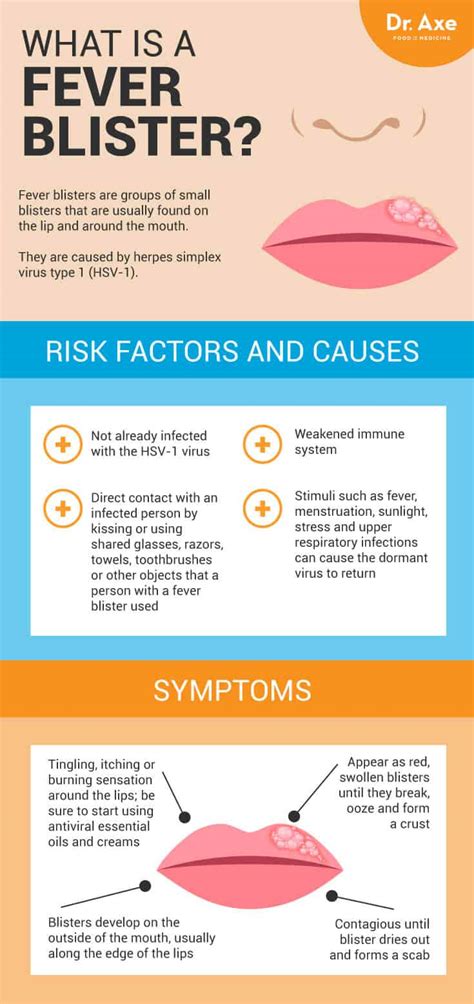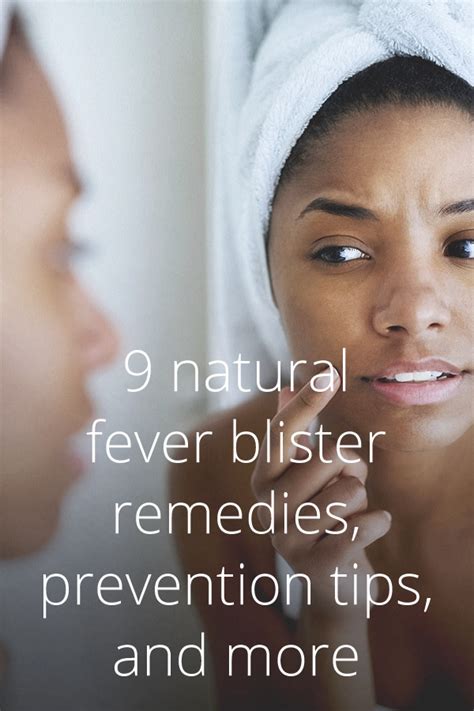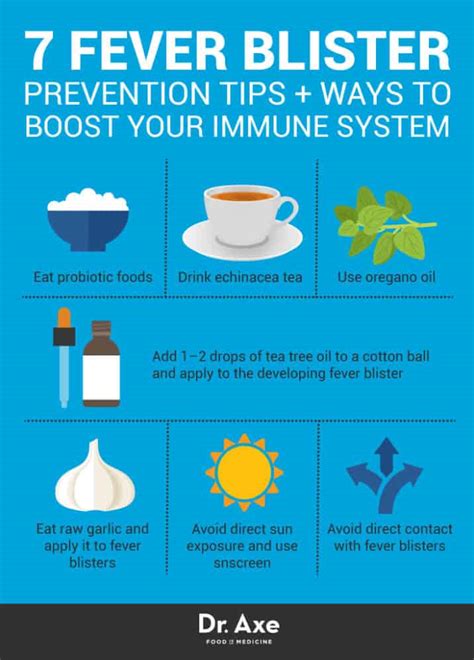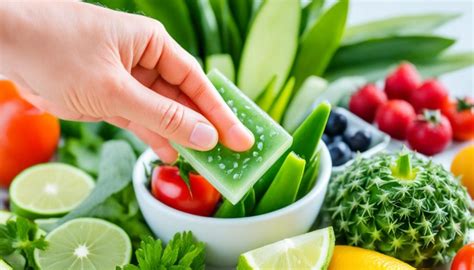Intro
Discover 5 effective ways to relieve fever blisters, including cold sore treatments, home remedies, and natural therapies to reduce symptoms and promote healing, alleviating pain and discomfort with oral care and self-care strategies.
Fever blisters, also known as cold sores, are a common and frustrating problem for many people. These painful and unsightly blisters can appear at any time, often triggered by stress, illness, or extreme weather conditions. If you're one of the millions of people who suffer from fever blisters, you know how important it is to find effective ways to relieve them. In this article, we'll explore the importance of managing fever blisters and provide you with valuable information on how to alleviate their symptoms.
Fever blisters can be a significant source of discomfort and embarrassment, affecting not only our physical health but also our self-confidence. They can make everyday activities like eating, talking, and even smiling a painful and awkward experience. Furthermore, if left untreated, fever blisters can lead to more severe complications, such as bacterial infections or scarring. Therefore, it's essential to take proactive steps to manage and relieve fever blisters as soon as they appear.
The good news is that there are many effective ways to relieve fever blisters, from home remedies to over-the-counter medications and prescription treatments. By understanding the causes and symptoms of fever blisters, you can take the first step towards finding the right relief method for you. Whether you're looking for a quick fix or a long-term solution, this article will provide you with the information and guidance you need to say goodbye to fever blisters and hello to healthier, happier skin.
Understanding Fever Blisters

Symptoms of Fever Blisters
The symptoms of fever blisters can vary from person to person, but common signs include: * Redness and swelling around the affected area * Itching, burning, or tingling sensations * Small, fluid-filled blisters that crust over and heal * Pain or tenderness around the blisters * Swollen lymph nodes or fever in some cases5 Ways to Relieve Fever Blisters

1. Apply Cold Compresses
Applying a cold compress to the affected area can help reduce swelling, ease pain, and slow down the replication of the virus. You can use a cold, damp washcloth or an ice pack wrapped in a towel to avoid direct contact with the skin. Apply the compress for 10-15 minutes, several times a day, to help relieve your symptoms.2. Use Topical Creams and Ointments
Topical creams and ointments can provide quick relief from fever blister symptoms. Over-the-counter options like docosanol (Abreva) or prescription medications like penciclovir (Denavir) can help reduce the severity and duration of the blisters. You can also try using natural remedies like aloe vera, tea tree oil, or lemon balm to soothe and calm the affected area.3. Take Antiviral Medications
Antiviral medications like acyclovir (Zovirax), valacyclovir (Valtrex), or famciclovir (Famvir) can help reduce the frequency and severity of fever blisters. These medications work by suppressing the virus and preventing it from replicating. Your doctor may prescribe antiviral medications if you experience frequent or severe outbreaks.4. Practice Good Hygiene
Practicing good hygiene is essential to prevent the spread of fever blisters and promote healing. Avoid touching the blisters or sharing personal items like utensils, towels, or lip balm. Wash your hands frequently, especially after applying topical creams or ointments. Keep the affected area clean and dry to prevent bacterial infections and promote faster healing.5. Try Home Remedies
Home remedies like honey, garlic, or yogurt can provide additional relief from fever blister symptoms. Honey has antibacterial and antiviral properties that can help soothe and calm the affected area. Garlic has antiviral properties that can help reduce the severity of the blisters. Yogurt contains probiotics that can help boost your immune system and prevent future outbreaks.Preventing Fever Blisters

Reducing Stress
Stress is a common trigger for fever blisters, so finding ways to manage stress can help prevent outbreaks. Try practicing relaxation techniques like meditation, deep breathing, or yoga to reduce your stress levels. Exercise regularly, get enough sleep, and take breaks throughout the day to help manage stress and prevent fever blisters.Eating a Balanced Diet
Eating a balanced diet rich in fruits, vegetables, whole grains, and lean proteins can help boost your immune system and prevent fever blisters. Include foods high in vitamin C, like citrus fruits or leafy greens, to help fight off the virus. Avoid foods that can trigger outbreaks, like spicy or acidic foods, and stay hydrated by drinking plenty of water throughout the day.Conclusion and Next Steps

If you're experiencing frequent or severe fever blisters, consult with your doctor or dermatologist to discuss the best treatment options for you. With the right combination of medication, self-care, and lifestyle changes, you can say goodbye to fever blisters and hello to healthier, happier skin.
What causes fever blisters?
+Fever blisters are caused by the herpes simplex virus (HSV), which is a highly contagious and common virus that can be spread through skin-to-skin contact, kissing, or sharing personal items.
How can I prevent fever blisters?
+While there is no guaranteed way to prevent fever blisters, you can reduce your risk by practicing good hygiene, reducing stress, eating a balanced diet, and avoiding triggers like extreme weather conditions or certain foods.
What are the symptoms of fever blisters?
+The symptoms of fever blisters include redness and swelling around the affected area, itching, burning, or tingling sensations, small, fluid-filled blisters that crust over and heal, pain or tenderness around the blisters, and swollen lymph nodes or fever in some cases.
How can I relieve fever blister symptoms?
+You can relieve fever blister symptoms by applying cold compresses, using topical creams and ointments, taking antiviral medications, practicing good hygiene, and trying home remedies like honey, garlic, or yogurt.
When should I consult a doctor for fever blisters?
+You should consult a doctor if you experience frequent or severe fever blisters, if your symptoms worsen over time, or if you have a weakened immune system. Your doctor can help you determine the best course of treatment and provide guidance on how to manage and prevent future outbreaks.
We hope this article has provided you with valuable information and guidance on how to relieve fever blisters. Remember to take proactive steps to manage and prevent them, and don't hesitate to consult with your doctor or dermatologist if you have any further questions or concerns. Share this article with your friends and family to help spread awareness and promote healthier, happier skin for everyone!
